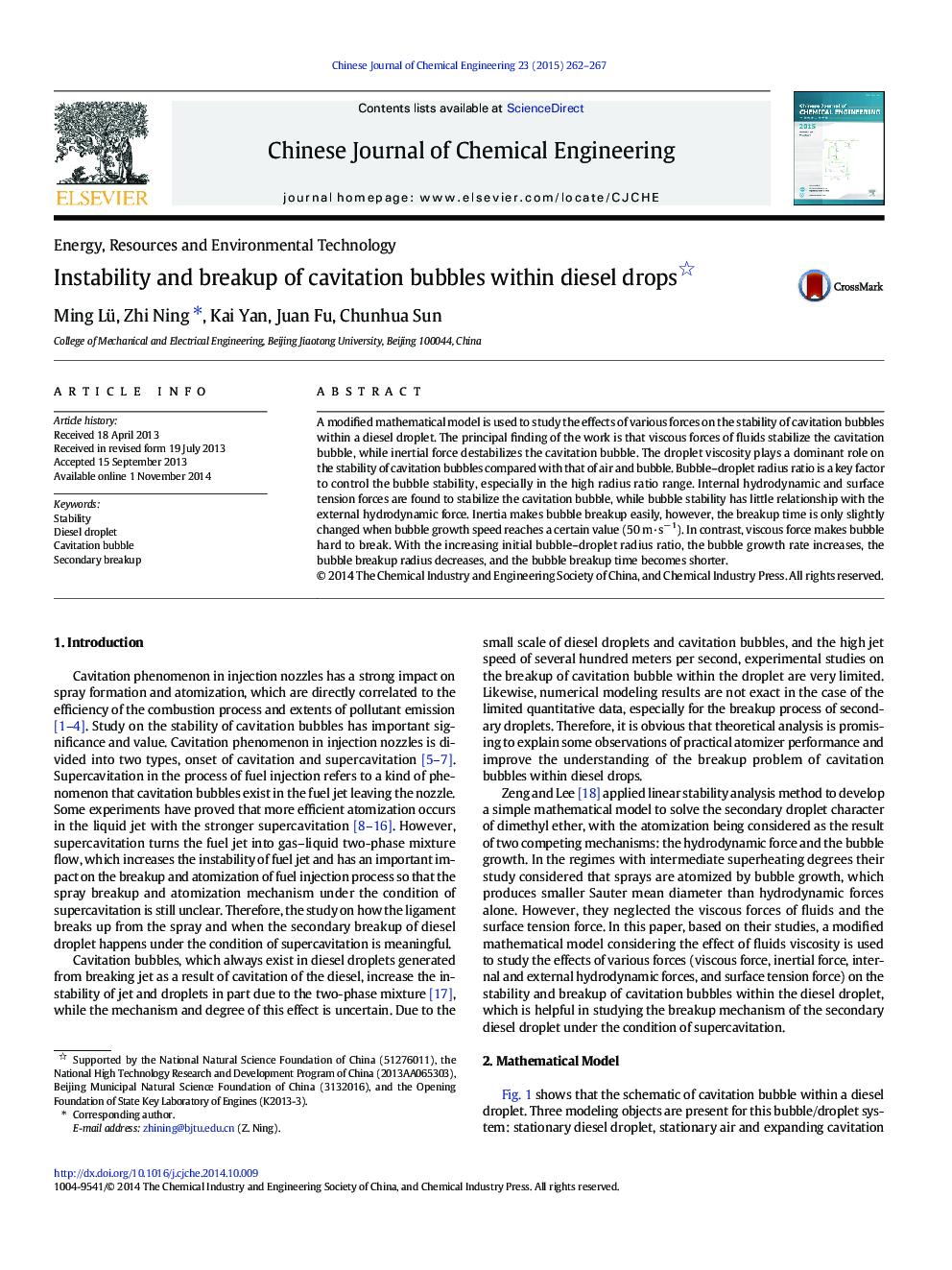| Article ID | Journal | Published Year | Pages | File Type |
|---|---|---|---|---|
| 168160 | Chinese Journal of Chemical Engineering | 2015 | 6 Pages |
A modified mathematical model is used to study the effects of various forces on the stability of cavitation bubbles within a diesel droplet. The principal finding of the work is that viscous forces of fluids stabilize the cavitation bubble, while inertial force destabilizes the cavitation bubble. The droplet viscosity plays a dominant role on the stability of cavitation bubbles compared with that of air and bubble. Bubble–droplet radius ratio is a key factor to control the bubble stability, especially in the high radius ratio range. Internal hydrodynamic and surface tension forces are found to stabilize the cavitation bubble, while bubble stability has little relationship with the external hydrodynamic force. Inertia makes bubble breakup easily, however, the breakup time is only slightly changed when bubble growth speed reaches a certain value (50 m·s− 1). In contrast, viscous force makes bubble hard to break. With the increasing initial bubble–droplet radius ratio, the bubble growth rate increases, the bubble breakup radius decreases, and the bubble breakup time becomes shorter.
Graphical abstractThis figure shows that the schematic of cavitation bubble within the diesel droplet. Three modeling objects are present for this bubble/droplet system. They are stationary diesel droplet, stationary air and cavitation bubble with the velocity of 2 m·s− 1 in radial direction. Three assumed conditions for building the mathematical model of instability of radial expansion of a droplet and an inside bubble are: only a cavitation bubble within a diesel droplet, no evaporation on the surface of diesel droplet, and the disturbances on the bubble surface are assumed to be spherically symmetric. It is further assumed that the ambient air and the diesel droplet are viscous and incompressible while the cavitation bubble is viscous and compressible.Figure optionsDownload full-size imageDownload as PowerPoint slide
